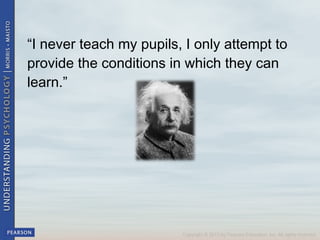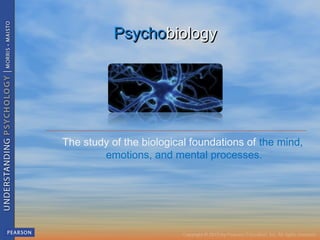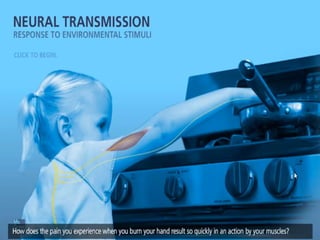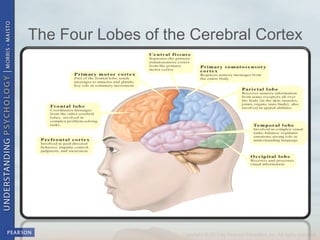The document discusses the biological basis of behavior and the nervous system. It covers topics such as neurons, synaptic transmission, the divisions of the brain including the cerebral cortex and limbic system, and the peripheral and autonomic nervous systems. The biological foundations of the mind, emotions, and mental processes are examined.




































